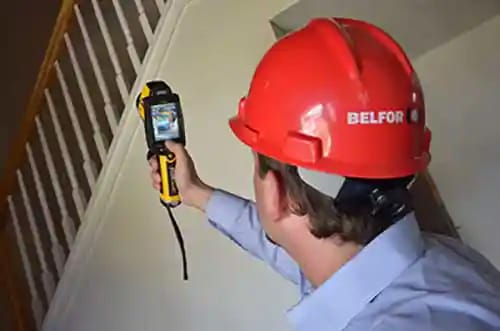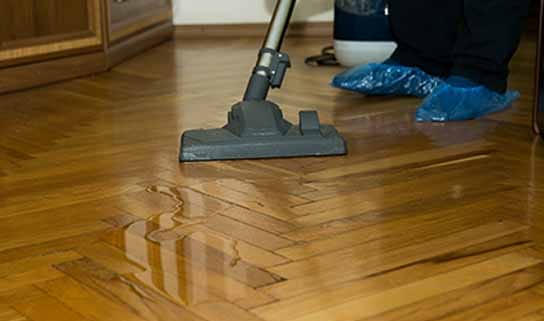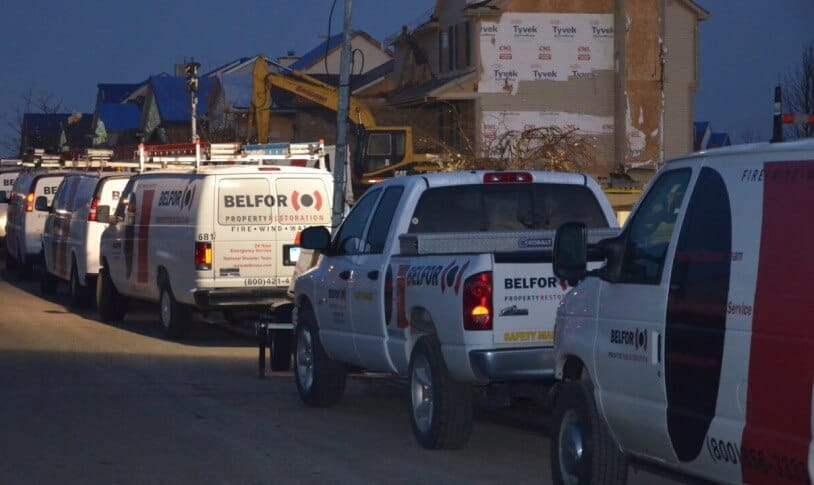RESIDENTIAL SERVICES
- Emergency Responce
- Shrink Wrap
- Contents Restoration
- Electronics Restoration
- Corrosion Control
- Air Duct Cleaning
- Document & Media Recovery
- Consulting Services
- Semiconductor Services
- Equipment & Machinery Repair
- Environmental Services
- General Contracting & Reconstruction
- Ultrasonic Cleaning
- Marine and Offshore Restoration
Protect Your Home from Potential Damage with Our Residential Flood Damage Services
We know how overwhelming the threat of flooding can be, especially when it comes to the extensive damage it can cause to your home and community.
When you call in BELFOR’s experts, we act fast to minimize damage and restore the safety and comfort of your home.

Residential Flood Restoration After the Disaster
After flood waters affect your home, it’s crucial to be vigilant about potential long-term issues, such as mold, which indicates lingering moisture.
Our mold damage section provides all the necessary information to help you recognize and address these signs promptly and effectively, ensuring your space remains safe and healthy.
Responding promptly to floodwater in your home is essential for minimizing long-term damage.
Here are the steps you can take following a flood:
- If you have time before the flood hits, lift furniture and valuables off the ground to protect them from water damage.
- Due to the contaminants in floodwater, it’s crucial for everyone to evacuate the property and find a safe location.
- If possible, turn off electricity and gas to prevent gas leaks and electrical hazards.
BELFOR’s Flood Damage Restoration Process
Once the flood waters start to recede, our cleanup team can begin restoring your home.
Our team will follow several steps to ensure everything is fully repaired. We will:
- Pump out any water and assess the damage left by the flood.
- Safely remove and dispose of any furnishings and contents that are damaged beyond repair.
- Clean and decontaminate the building to remove any potential environmental, chemical, and/or biological contaminants left by the flood water.
- Check the building for any structural damage that could cause potential hazards either now or in the future.
- Dry and dehumidify the property to make sure that no residual water remains. If left untreated, this could lead to further damage, including mold buildup.

Interested in Our Residential Flood Damage Cleanup Services?
Recovering your home to its original state after a flood can be a daunting and lengthy process.
At BELFOR, we’re here to help streamline this process, ensuring your property is back to normal as quickly as possible.
Our team has extensive experience in disaster recovery and restoration, utilizing the latest techniques and technology to efficiently repair and rebuild your residence.
Do you have any questions or need immediate assistance? We’re here and ready to help!
Full Time Dedicated Professionals
We will stand by you to ensure a complete recovery.
Flood Damage Frequently Asked Questions
Flooding occurs when water temporarily overflows onto normally dry land, often causing significant damage. It is the most common natural disaster in the United States.
Different factors can cause flooding, including rain, snow, coastal storms, storm surges, and overflows from dams and other water systems.
“Flood damage” as a term is more officially used in the insurance industry, especially when describing what is and isn’t covered on an insurance policy.
In insurance terms, flood damage typically refers to flooding from external sources like rivers or rain, not from internal issues like a burst pipe or broken water heater.
To be prepared, discuss with your insurance provider what exactly counts as flood damage under your policy.
When your property suffers from serious flood damage, it’s best to call in the experts.
Flood water can be dangerous, mingling with electricity and carrying waste that’s not always visible but harmful. It requires thorough drying, decontamination, and dehumidification to prevent further damage.
If you live in a flood-prone area, having flood insurance alongside your homeowner’s insurance is key. It can provide significant help in managing and recovering from flood damage.
.jpg)



![Mold In Air Vents & Ducts [Causes & 2026 Cleaning Guide]](https://www.belfor.com/us/wp-content/uploads/sites/2/2025/10/mold_in_air_vents_and_ducts_hero_image-450x300.jpg)